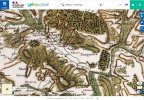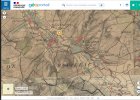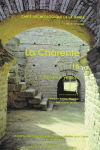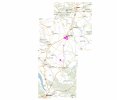- Time of past OR future Camino
- Frances 15,16,18
VdlP 23, Invierno 23, Fisterra 23
Was talking to my sister yesterday, who lives a few kms from Villejesus. (Department of Charente)
The village is between Poitiers and Saintes.
She said there were scallop shell signs in the village of Villejesus.
I was wondering if the village is on a recognised Camino route.
Perhaps the Tours route?
Or maybe it is off route a bit?
Is there a detailed route map of the Tours route anywhere.
I was just curious.
The village is between Poitiers and Saintes.
She said there were scallop shell signs in the village of Villejesus.
I was wondering if the village is on a recognised Camino route.
Perhaps the Tours route?
Or maybe it is off route a bit?
Is there a detailed route map of the Tours route anywhere.
I was just curious.























